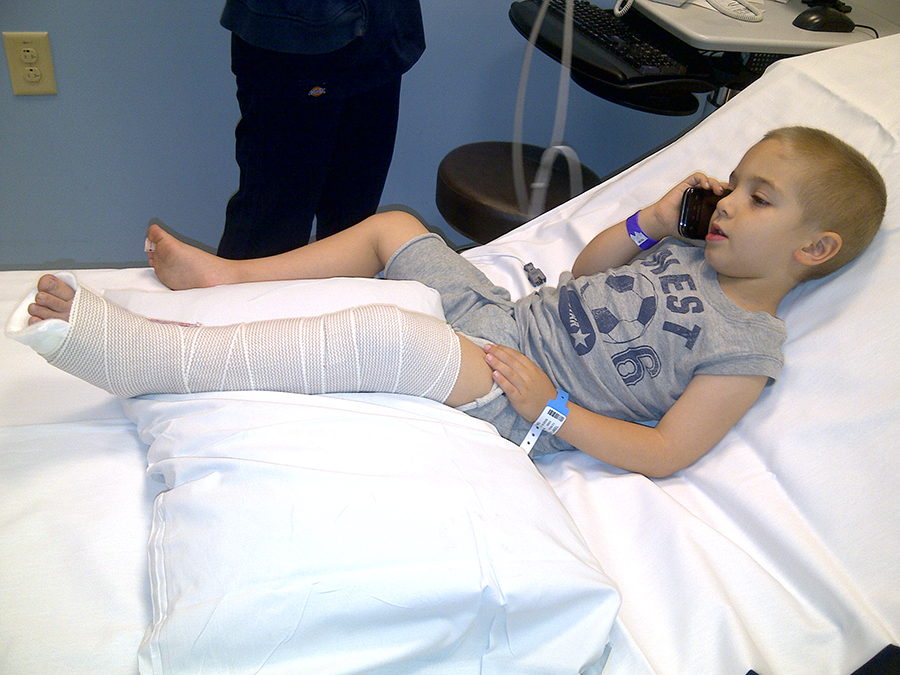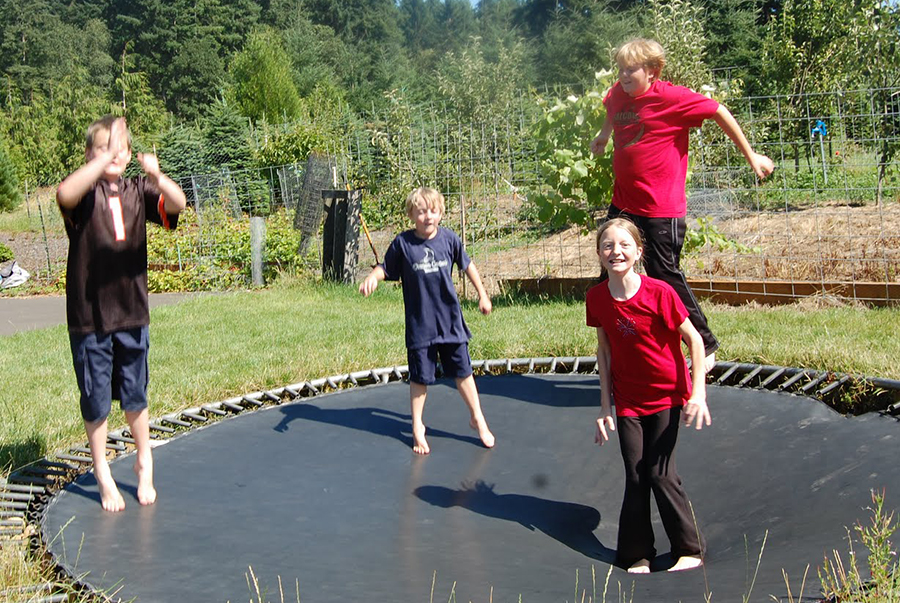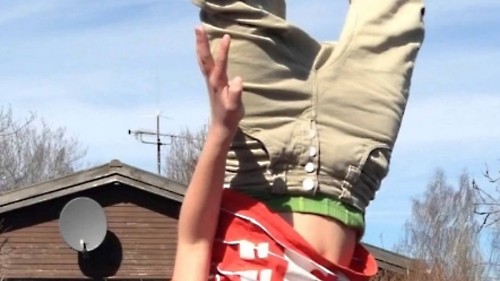Trampolines: Still NOT a Good Idea For Kids
As they did in 1977, 1981, and 1999 the American Academy of Pediatrics has completed an extensive review of everything we’ve learned in the past 14 years and re- re- re- re-affirmed its policy on trampoline use by children: Don’t let them do it! It’s way too dangerous for recreational use by children.
I’ll pause for a moment to let the gasps and moans subside. In addition to all the literature they reviewed they examined safety studies, the latest development in safety devices, injury and hospital statistics and the personal opinions of numerous physicians and parents.
The authors of the position statement did note that trampoline injury rates have been decreasing since 2004 BUT “the potential for severe injury remains relatively high.”
In the world of the “politically correct, unemotional, understatement” which is “general public publication” speak, “relatively high” is code for “what the crap are you thinking buying this kid a machine like that!”
Injury rates for 0 to 4-year-olds were 70 per 100,000 in 2009! Which is incredible to me. A four year old can’t chew gum without choking, or cross the street alone, dress themselves or be left in the tub alone – what on earth were they doing on a trampoline?!!
For 5 to 14 year olds that increased dramatically to 160 injuries per 100,000; which, when considering the massive disparity in population exposure compared to bicycles, swimming pools and other playground equipment, presents a substantial community problem. The similar injury rates for the other activities come from a much larger participating population AND evidence-based safety advisories for swimming pools are broadly publicized, whereas such advisories for trampolines are not well disseminated at all.
Let’s Look At The Injuries
The evidence showed that most trampoline injuries occur when multiple people are using it at the same time, and the smallest individuals are up to 14 times (that’s 1,400 percent) more vulnerable to injury because of weight differences and their less-developed motor skills.

Out of every group of 160 injuries, falling accounts for about 53 of them (27-37%) and the risk for falling rises when the trampoline in use is on an uneven surface.
So, you’ll just buy the “ultra” model that the salesman claims has all the safety features and your kids will be safe. Absolutely not! The use of all the padding possible does not make any difference in the injury rate statistics.
Ok, you’ll make a rule that the kids can’t use it unless one of us parents are supervising them and THEN they’ll be safe. Positively not! Thirty-three to fifty percent of trampoline injuries ALREADY occur under adult supervision.
Ok, you’ll only let your kids over six use it and they’ll be safe. Alas and Alac – NO! Actually, that might help a little for the ones under 6 (how big a fight do you’ll think you’ll get); but, only less than a third of injuries seen in the ER come from trampoline users under six. Still most of the injuries are in “accountable” children, with fair coordination skills and reasonable judgment most | much | a fair-amount | some of the time.
Ok, you’ll just spin the chambers in Russian Roulette and take your chances that the injury your kid gets won’t be too bad. Huh?! Although foot and ankle injuries (i.e. sprain, breaks) are the most common (perhaps maybe 60%), around 20 percent are to the head and neck – AND “0.5% of all trampoline injuries result in PERMANENT NEUROLOGIC DAMAGE.”
Notice how I put permanent neurologic damage in CAPS? That’s because this is the real reason trampolines are not a good idea for children: when the injuries happen they are really, R E A L L Y bad! And sometimes NEVER heal.
Policy Statement and Guidelines
Pediatricians, however, are not entirely witless. People are who they are and will do what they do. So, you can almost hear the policy statement’s authors’ sighs as it includes some absolute minimum guidelines parent’s should follow:

- Pediatricians should advise against recreational trampoline use.
- Homeowners should verify whether trampoline injuries are covered by their insurance policies.
- Any trampoline use should be restricted to a single user at a time.
- Adults familiar with safety guidelines should supervise any trampoline use.
- Trampoline conditions should be inspected regularly, and trampolines in disrepair should be discarded.
One additional problem noted was the fact that they couldn’t find any data specific to trampoline parks and structured trampoline sports programs like schools and other venues. Until we have such data “The cautions outlined here,” it says, should be observed for those as well.
The summary: “Pediatricians need to actively discourage recreational trampoline use. Families need to know that many injuries occur on the mat itself, and current data do not appear to demonstrate that netting or padding significantly decrease the risk of injury.”
[Pediatrics. Published online September 24, 2012]

